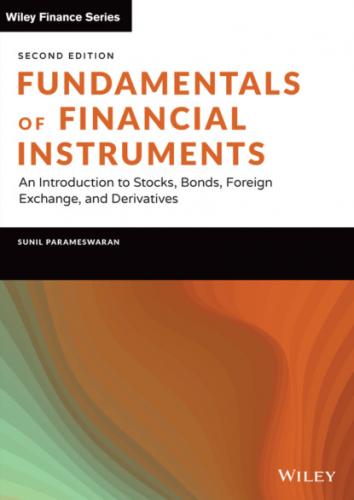Thus, the present value of a perpetuity is A/r.
EXAMPLE 2.20
Let us consider a financial instrument that promises to pay $2,500 per year for ever. If investors require a 10% rate of return, the maximum amount they would be prepared to pay may be computed as follows.
Thus, although the cash flows are infinite, the security has a finite value. This is because the contribution of additional cash flows to the present value becomes insignificant after a certain point in time.
THE AMORTIZATION METHOD
The amortization process refers to the process of repaying a loan by means of regular installment payments at periodic intervals. Each installment includes payment of interest on the principal outstanding at the start of the period and a partial repayment of the outstanding principal itself. In contrast, an ordinary loan entails the payment of interest at periodic intervals, and the repayment of principal in the form of a single lump-sum payment at maturity. In the case of an amortized loan, the installment payments form an annuity whose present value is equal to the original loan amount. An Amortization Schedule is a table that shows the division of each payment into a principal component and an interest component and displays the outstanding loan balance after each payment.
Take the case of a loan which is repaid in N installments of $A each. We will denote the original loan amount by L, and the periodic interest rate by r. Thus this is an annuity with a present value of L, which is repaid in N installments.
The interest component of the first installment
The principal component
The outstanding balance at the end of the first payment
In general, the interest component of the ‘t’th installment is
The principal component of the ‘t’th installment is
and the outstanding balance at the end of the ‘t’th payment is
EXAMPLE 2.21
Sylvie has borrowed $25,000 from First National Bank and has to pay it back in eight equal annual installments. If the interest rate is 8% per annum on the outstanding balance, what is the installment amount, and what will the amortization schedule look like?
Let us denote the unknown installment amount by A. We know that
We will analyze the first few entries in Table 2.6 in order to clarify the principles involved. At time 0, the outstanding principal is $25,000. After one period, a payment of $4,350.37 will be made. The interest due for the first period is 8% of $25,000, which is $2,000. Consequently, the excess payment of $2,350.37 represents a partial repayment of principal. Once this amount is repaid and adjusted toward the principal, the outstanding balance at the end of the first period will become $22,649.63. At the end of the second period, the second installment of $4,350.37 will be paid. The interest due for this period is 8% of the outstanding balance at the start of the period, which is $22,649.63. Thus the interest component of the second installment is $1,811.97. The balance, which is $2,538.40, constitutes a partial repayment of principal. The value of the outstanding principal at the end should be zero. As can be seen, the outstanding principal declines after each installment payment. Because the payments themselves are constant, the interest component will steadily decline while the principal component will steadily increase.
TABLE 2.6 An Amortization Schedule
| Year | Payment | Interest | Principal Repayment | Outstanding Principal |
|---|---|---|---|---|
| 0 | 25,000 | |||
| 1 | 4,350.37 | 2,000.00 | 2,350.37 | 22,649.63 |
